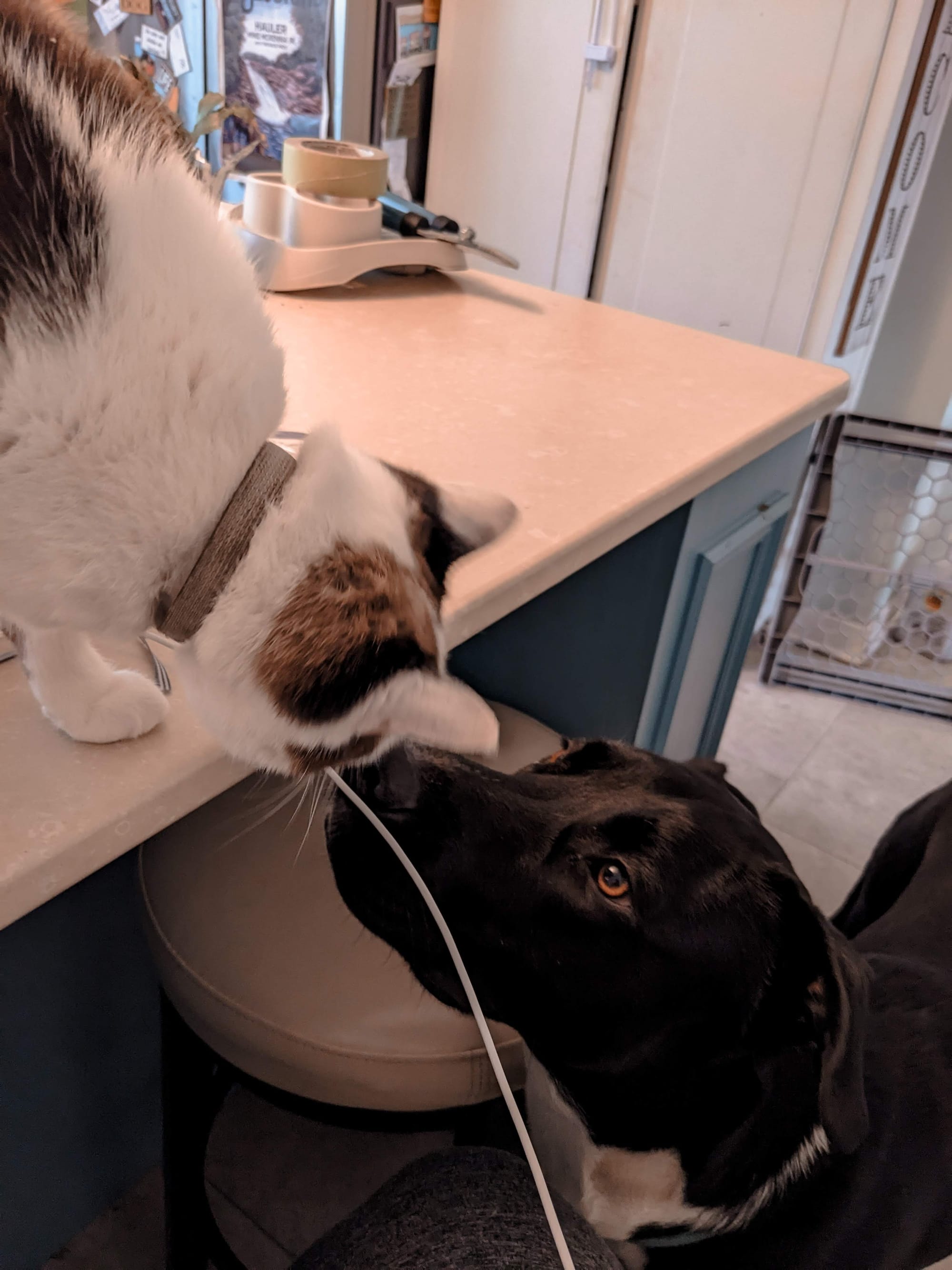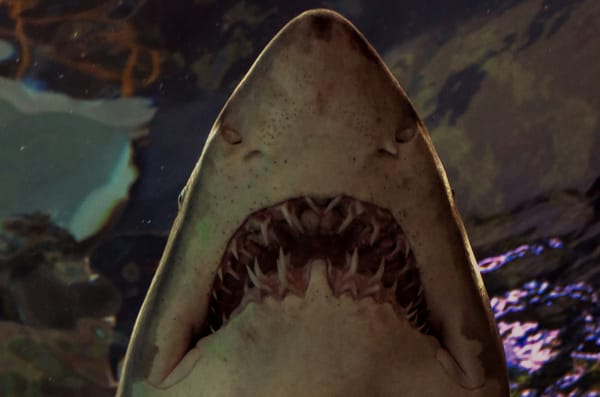The Frog Pond #18: How many planets are in the Solar System?
Most planetary classification has been on a vibes-based system for centuries.

Or: Most planetary classification has been on a vibes-based system for centuries.
I learned a song from Blues Clues when I was a kid to remember the order of the planets in our solar system, from closest to farthest from the sun1. An easy 9.
Then Pluto was de-classified as a planet in 2006. Down to 8.
Then a few weeks ago an article comes across my feed; Scientists say they have found evidence of an unknown planet in our solar system. Could we be back up to 9?
The seemingly simple question of "how many planets are there in our solar system?" turns out to have a complicated history!
Did you know Pluto isn't the first planet that's been "declassified"?
This month's topic comes from the rocky discovery and re-classifications of Ceres, a dwarf planet in the asteroid belt. You might have heard of it as Ceres Station in the book series and TV show The Expanse, or from the video game Destiny.
When Ceres was discovered in 18012, it had already been theorized as the missing planet between Mars and Jupiter for centuries. Since as far back as 1596, astronomers used a variety of astronomical calculations to determine how many planets there were (and were generally very off the mark given they didn't yet have a heliocentric understanding of the solar system)3. Its name was disputed during its first year of observation; Ceres Ferdinandea, Juno, Hera, and ultimately just Ceres, after the Roman goddess of agriculture2. Very little was known about Ceres, but it could be found in Victorian textbooks as the 5th planet from the Sun4. Ceres has been estimated to be a huge range of sizes over the decades, but it wasn't until the 1970s that Ceres' size was accurately observed with a diameter of 939 km5.
Ceres has been classified in many different ways since 1801; as a comet, a missing planet, an asteroid (the first body to be referred by this new term!), a minor planet, and ultimately a dwarf planet at the same time as Pluto4. Many of these terms have been used interchangeably.
How did we find the planets?
A planet in Ancient Greece meant a "wandering star" that moved across the sky, as opposed to the "fixed stars" that kept their place6. These included what would later be called Mercury, Venus, Mars, Jupiter, and Saturn as well as the Sun and Moon. Yeah! the Sun was a planet! The Moon was a planet! Though Plato7 and Aristotle8 noted that the Sun and Moon moved less than the other 5 in the 360s BCE.
The 7 planet model was generally accepted throughout the Middle Ages and Renaissance in Western cultures9, though not in others. The Indian philosopher Yajnavalkya c. 900–700 BCE proposed a form of heliocentrism10, and later Aryabhata published in 499 that the Earth spun on an axis and the Sun was responsible for the movements of the planets11. Islamic astronomy criticized the Ptolemaic (Earth-centric) system since as early as the 10th century and developed theories surrounding Earth as a moving celestial body instead of the still, centre point throughout the next 4 centuries12.
It wasn't until Nicolaus Copernicus' heliocentric model, similar to 13th-14th century models by Mo'ayyeduddin al-Urdi, Nasir al-Din al-Tusi, and Ibn al-Shatir13, was accepted in the 1680s that the Sun and Moon were revoked of their planet status while Earth was considered a planet14, bringing the total known planets down to 6.
Flash forward to 1781. Astronomer William Herschel discovers an object that changes size depending on the magnification he used (unlike stars)15. Comets were the only object at the time that were thought to move when seen through a telescope so he chalked it up to that, but a colleague argued that given it didn't have the comet's classic tail, it was likely a planet moving in a circular orbit instead of a comet's ellipsis16. This became the 7th planet - Uranus, named after the father of Saturn.
Further study of Uranus led to the 1846 discovery of Neptune, which then led to finding Pluto in 193017. Pluto was first thought to be roughly the same mass of Earth, though further observation gradually shrank the furthest planet down to 1/500th of the size17.
Add in Ceres' discovery from 1801 and we're now at 10 planets by 1930!
Here's where planets get messy.
But it's not so simple! Astrological terms haven't always meant what they mean today. Many definitions used to be muddier, or just didn't exist. When 4 of Jupiter's moons were discovered by Galileo in 1610, they were considered satellites but they were also called planets that flew around the "star" of Jupiter18. So star and planet were being used interchangeably depending on what was orbiting what.
Saturn's largest moon, Titan, was considered a satellite when first discovered in 1655, but it was also called a planet, a star, a moon, and an attendant19. Other moons of Saturn like Iapetus and Rhea in the 1670s were also described as new planets around Saturn20, but then Dione and Tethys' discovers in 1686 were called Saturnian moons and strictly referred to as satellites of the primary planet21. But then we get to 1787, and our guy Herschel calls Uranus' Titania and Oberon both satellites and secondary planets22!
Oh! And in 1802? A year after Ceres' discovery? Pallas was also discovered at roughly the same distance from the Sun. Then Juno in 1804 and Vesta in 180723. This created a problem for astronomers, because these four "worlds" were all in the same orbital distance, and thus the concept of asteroids was born. These 4 asteroids would be the only asteroids until 1845, and textbooks of the time still considered them a type of planet23. Because again, planet kind of didn't mean anything specific then other than a "star-like" thing in the sky that moves.
By the 1860s with better astronomical technology, the number of asteroids had reached over 10023. European and US observatories began using "minor planet" or "small planet" as a collective term. "Minor planet" is still the term used today for all small bodies in orbit around the sun24.
Astronomers began finding icy bodies beyond Neptune's orbit that were similar to Pluto. This confirmed the existence of the Kuiper belt25, a band of ice debris and the source of comets that have orbital periods under 200 years. Because Pluto was only one part of this band, its placement as a planet came under questioning. A new definition of planet was debated in 1999 ("any body in the Solar System that is more massive than the total mass of all of the other bodies in a similar orbit"26), but public outcry prompted the International Astronomical Union not to propose removing Pluto yet27.
But the reprieve was short-lived. Each new discovery at the edge of the solar system chipped at Pluto's planetary armour until 2005 when the final strike hit; a larger object in the Kuiper belt had been discovered, named Eris28. NASA released the news that it would be the 10th planet29, yet allowing Pluto's continued planet status would create an arbitrary minimum size for planets. Many astronomers wanted to grandfather Pluto as a planet30, but ultimately a vote of the IAU General Assembly in August 2006 delivered the verdict; Dwarf planets were invented as an in-between of planets and rocks, but were not considered planets despite the name31.
Pluto, Ceres, and Eris became dwarf planets, but different astronomers recognize different objects as dwarf planets, with a generally regarded 10 meeting the criteria32.
Kicked out of the "kicked out planets" club
Vesta, one of the asteroids found in Ceres' neighbourhood back in the 1800s, is no longer considered a dwarf planet because its dimensions aren't spherical due to impacts with other bodies33.
Phoebe, the largest moon of Saturn and a captured "centaur" (a small rock that orbits the Sun between Jupiter and Neptune, named centaurs due to their dual characteristics of asteroids and comets34), also isn't spherical33.
Triton, the largest moon of Neptune, is larger than Eris or Pluto but doesn't directly orbit the sun33.
Charon, Pluto's largest moon, was potentially a double dwarf planet with Pluto, but currently is considered a satellite33.
So what makes a planet a planet?
The IAU definition from 2006 describes a planet as a celestial body in the Solar System that:
- is in orbit around the Sun,
- has sufficient mass to assume "hydrostatic equilibrium" aka is spherical (approximately), and
- has "cleared the neighbourhood" around its orbit, aka isn't sharing its orbit with anything else that doesn't orbit it like a moon35.
That's simple enough! Right? Of course not. These rules aren't universally applicable. Mars wouldn't be a planet if it were in the inner Oort cloud because it wouldn't be able to clear its neighbourhood36, and Mercury doesn't have hydrostatic equilibrium37. But both are explicitly included in the 8 known planets of IAU's definition. So there's a lot of messy lines in planet-defining that requires context and historical precedence.
Winners and losers
The formation and evolution of our Solar System also holds the key to what passes the planetary sniff test, according to a theory by Steven Soter, professor of astrophysics. Early protoplanets (yep, yet another planet-adjacent term!) emerged from cosmic dust. Some bodies that happened to be larger than others attracted more and more matter, creating a snowball effect as their increased gravity meant more material was attracted. Eventually those bodies become much larger than anything else within reach. Meanwhile areas like the asteroid belt and Kuiper belt never amassed a single object due to the gravitational effect of Jupiter and the too widely spaced orbit during the formation period, respectively38.
The vast difference between bodies that did and did not reach orbital dominance, in Dr. Soter's theory, accounts for which objects do and do not belong as planets. Mars is larger than everything else in its orbital zone by a factor of 5100 - a huge difference! Meanwhile Ceres only accounts for 1/3 of the material in its orbit and Pluto's ratio is only 7%39.
Planet 9?
Remember the article I mentioned earlier? In what might sound similar to the musings of Renaissance astronomers about Ceres' existence, a team of researchers simulated scenarios to make sense of why the trans-Neptunian objects (Pluto, Eris, and anything else that's beyond Neptune) have unstable orbits and tend to cluster in one section at their closest approaches to the Sun, as though "shepherded" by an unknown body. One potential reason, and the one the researchers believe is the most plausible, is the interaction between Neptune's orbit and a "Planet 9" orbit further out into space40.
Nothing's been discovered so far, but I find it so fascinating how astronomy has changed so much in the thousands of years of people looking up at the lights in the night sky, and yet aspects of it remain relatively unchanged. We're still using the best math we know to figure out what's past what our current technology has detected.
And honestly it tickles me that planets have never had exact measurements to their definition. There's something beautiful about the parts of the Solar System being, in some way, uncategorizable. The terms will always be a little fuzzy, there'll always be exceptions, and there could always be a new discovery that changes the whole system.
We used to think a handful of stars moved while the rest lay still in the sky above an unmoving Earth. What are we going to know someday that'll make 2024 seem quaint?
Maybe it's the parallels to the gender spectrum that fascinates me. They're called bodies, it's right there! To be a planet or a satellite or a star - or none! Or all! An icy bit of rock at the edge of the system? A body considered a planet in one orbit, but not another? There's a tension in me between my hunger for precision, classification, and order, versus my wonder at the chaotic mystery of the universe.
A word from a passing frog
Apologies for a late Frog Pond! Life has been (positively!) hectic lately and I'd rather take my time making these newsletters than rush something out on the first of the month.
I've been writing this issue while pet-sitting for my parents, so as recompence for my lateness please enjoy Ace and KitKat:



Kitkat (left) and Ace (right)!
Writing
I'm working on the first draft of Dark Academia Fantasy novel! It's been a lot of fun to re-outline and find the voice. It's also an ambitious project for me with multiple magic systems, topics such as student protests, climate change, and class warfare mixed with academic achievement, mental health (or lack thereof), and finding belonging when you're in your 20s and feel like you've already missed the boat on success. If any of this sounds like it might resonate with you, I hope you'll get to read it someday!
Publishing
No updates! Yet! :)
Reading
I read 3 books in April! Including:
Burn Down, Rise Up by Vincent Tirado: This was a fun YA mashup of Stranger Things-style horror and urban legends featuring a rich history about the Bronx!
What Feasts at Night by T. Kingfisher: Loved this sequel to What Moves the Dead! This gothic series following a nonbinary retired soldier of a fantasy country in the middle of Europe has rich characters and atmosphere - and at 151 pages, reads like a breeze!
A Dowry of Blood by S. T. Gibson: An epistolary retelling of Dracula from the brides' perspective! I've meant to read this one for forever and it didn't disappoint - the prose was lush and the characters popped off the page for me.
I nearly finished The Only Good Indians by Stephen Graham Jones when it got returned to the library so unfortunately that'll have to wait for the next loan but I was thoroughly enjoying it!
I'm currently finishing up Moon of the Turning Leaves by Waubgeshig Rice, the sequel to one of my favourite books of the year. Rice's post-apocalyptic series is such a satisfying read. There's something about its slower pace and relatable, grounded characters that has me both tense for any problems that come their way and attached to their struggles! If you listen to any of my book recommendations this year, please pick this one!
Footnotes
1: https://www.youtube.com/watch?v=zA8olJuyTyc
2: https://adsabs.harvard.edu/full/1971JHA.....2..195F
3: https://web.archive.org/web/20071116022100/http://www.astropa.unipa.it/HISTORY/hoskin.html
4: https://web.archive.org/web/20071106124911/http://aa.usno.navy.mil/faq/docs/minorplanets.php
5: chrome-extension://efaidnbmnnnibpcajpcglclefindmkaj/https://legacy.adsabs.harvard.edu/pdf/1994qjras..35..331h
6: https://www.merriam-webster.com/dictionary/planet
7: https://classics.mit.edu/Plato/timaeus.html
9: Anonymous, "The Theory of the Planets," in Edward Grant, ed. A Source Book in Medieval Science, (Cambridge: Harvard University Press, 1974), p. 452.
11: https://books.google.ca/books?id=x40mwFwgK44C&redir_esc=y
12: Nasr, Seyyed Hossein (1993). An Introduction to Islamic Cosmological Doctrines. SUNY Press. p. 135. ISBN 978-1-4384-1419-5.
13: https://archive.org/details/oxfordhistoryofi00john
14: Weintraub, David A. Is Pluto a Planet, p. 66, Princeton University Press, 2007
15: Croswell, Ken (1999). Planet Quest: The Epic Discovery of Alien Solar Systems. Oxford University Press. pp. 48, 66. ISBN 978-0-19-288083-3.
16: Patrick Moore (1981). William Herschel: Astronomer and Musician of 19 New King Street, Bath. PME Erwood. p. 8. ISBN 978-0-907322-06-1.
17: Croswell, Ken (1999). Planet Quest: The Epic Discovery of Alien Solar Systems. Oxford University Press. pp. 48, 66. ISBN 978-0-19-288083-3.
18: Galileo Galilei (1989). Siderius Nuncius. Albert van Helden. University of Chicago Press. p. 26.
19: Christiani Hugenii (Christiaan Huygens) (1659). Systema Saturnium: Sive de Causis Miradorum Saturni Phaenomenon, et comite ejus Planeta Novo. Adriani Vlacq. pp. 1–50.
20: Giovanni Cassini (1673). Decouverte de deux Nouvelles Planetes autour de Saturne. Sabastien Mabre-Craniusy. pp. 6–14.
21: https://royalsocietypublishing.org/doi/10.1098/rstl.1686.0013
22: William Herschel (1787). An Account of the Discovery of Two Satellites Around the Georgian Planet. Read at the Royal Society. J. Nichols. pp. 1–4.
23: Hilton, James L. "When did asteroids become minor planets?" (PDF). U.S. Naval Observatory. Retrieved May 25, 2006.
24: https://minorplanetcenter.net//iau/MPCORB.html
25: https://ui.adsabs.harvard.edu/abs/1995ARA&A..33..327W
26: https://web.archive.org/web/20060427091759/http://solarsystem.nasa.gov/scitech/display.cfm?ST_ID=105
27: https://web.archive.org/web/20061016080949/http://www.asterism.org/newsletter/l9904-3.htm
28: https://web.gps.caltech.edu/~mbrown/planetlila/
30: https://www.jpl.nasa.gov/events/lectures/nov05.cfm
31: https://www.iau.org/news/pressreleases/detail/iau0602/
32: "Dwarf planets are planets, too: Planetary pedagogy after New Horizons" Archived June 27, 2021, at the Wayback Machine.
33: https://en.wikipedia.org/wiki/Dwarf_planet#Former_dwarf_planets
34: Horner, J.; Evans, N.W.; Bailey, M. E. (2004). "Simulations of the Population of Centaurs I: The Bulk Statistics". Monthly Notices of the Royal Astronomical Society. 354 (3): 798–810. arXiv:astro-ph/0407400. Bibcode:2004MNRAS.354..798H. doi:10.1111/j.1365-2966.2004.08240.x. S2CID 16002759.
35: https://en.wikipedia.org/wiki/IAU_definition_of_planet#
36: Gibor Basri; Michael E. Brown (2006). "Planetesimals to Brown Dwarfs: What is a Planet?" (PDF). Annual Review of Earth and Planetary Sciences. 34: 193–216. arXiv:astro-ph/0608417. Bibcode:2006AREPS..34..193B. doi:10.1146/annurev.earth.34.031405.125058. S2CID 119338327.
37: Sean Solomon, Larry Nittler & Brian Anderson, eds. (2018) Mercury: The View after MESSENGER. Cambridge Planetary Science series no. 21, Cambridge University Press, pp. 72–73.
38: Steven Soter (August 16, 2006). "What is a Planet?". The Astronomical Journal. 132 (6): 2513–2519. arXiv:astro-ph/0608359. Bibcode:2006AJ....132.2513S. doi:10.1086/508861. S2CID 14676169.
39: https://web.gps.caltech.edu/~mbrown/eightplanets/
40: https://www.independent.co.uk/space/planet-9-nine-solar-system-b2530985.html





